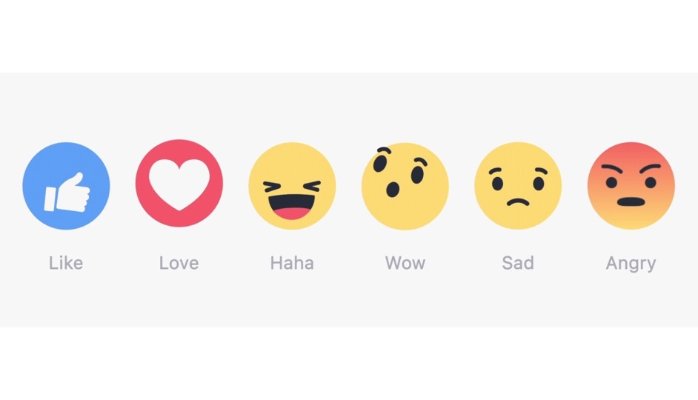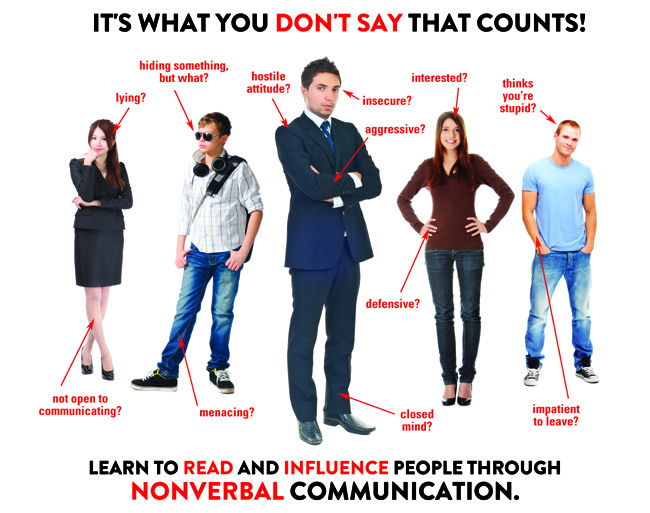So what happened to the world after mobile telephony and the Internet? Email, SMS, Whatsapp, and various other forms of verbal communication or texting as the main medium almost seem to have threatened to take away the human touch completely from one to one communication. You may argue that video is big, but I am talking about daily conversations of which text forms a large part.
Types of Non-Verbal Communication
- Facial expressions are responsible for a large part of non-verbal communications. Anger, sadness, fear and happiness are all communicated through facial expressions.
- Gestures like waving, pointing and even looking at the watch to say you are getting late
- Paralinguistics which is about vocal communication and includes tone of voice, loudness, inflection and pitch
- Posture which included hand-crossing and leg-crossing
- Proxemics which is personal space that people have and which varies by culture. See the queue at the bustops in Britain and you will know what I mean. They are all at least a metre from each other while waiting in a queue. We as a culture for example have a much smaller personal space.
- Eye gaze which can communicate a range of emotions interest, attraction and hostility
- Haptics where you touch a person to add to the emotion of whatever you are saying. A hand over a shoulder, a handshake etc.
The Power of the Smile
The face which is known to have 42-43 muscles has always been a key part of all communication. The smile contributes to a large component of body language. A smiling expression is known to release happiness chemicals (serotonin and dopamine triggered by the left frontal cortex) which improve the overall mood. In addition, smiling also increases your charisma. And smiles are universally regarded as friendly.
I guess in the early days of the digital era we couldn’t be as expressive as we wanted to, because text is devoid of the human emotion that body language gives us.
The Emoticon Revolutionised Modern Communication
The arrival of the emoticon however became our substitute for incorporating body language into text. You will notice that most expressive people tend to use the emoticon more than the less expressive people. So does the emoticon have the same effect as a real smile? Apparently yes. A study at Australia’s Flinders University found that the pattern of brain activity triggered by looking at an emoticon is fairly similar to when someone sees a real smiling human face. The like button on Facebook, the dislike sign, everything that we use to make our communication richer is actually substituting body language in one way or another in one to one communication where we use text as the main medium.
Facebook's New Emoji
 Imagine the enormous strain on one word (sign) to convey the entire gamut of human emotions amongst millions of Facebook users round the world. In any case considering that up until now, we relied on only on 'like' to tell us the diversity of the human story.
Imagine the enormous strain on one word (sign) to convey the entire gamut of human emotions amongst millions of Facebook users round the world. In any case considering that up until now, we relied on only on 'like' to tell us the diversity of the human story.
All of you remember the inappropriateness of ‘like’ in certain kinds of situations. Remember the times when your best friend made a post that his father had just passed away and by the time you saw the post it already had already crossed a 200 likes. You wondered what that really meant. After all how could you ‘like’ the fact that your best friend was in deep pain, needed comfort and condolences and the world at large thought that clicking a ‘like’ button did the painful and unpleasant job of expressing your grief.
Caught in that rather uncomfortable Facebook trap, many overcame their natural reticence and reservation and took the trouble of actually making a comment because they were not sure that just a ‘like’ might well be considered downright offensive. So while on a normal day clicking the ‘ like’ button inhibited the need to make a comment or have a conversation, when there was bad news it actually encouraged comments.
So do more emoticons really help?
Let’s rewind to the same situation. So your friend has lost his father and the button ‘like’ does not really seem appropriate. Thank God there is a 'sad' button now. Most people use Facebook for validation. When users get likes and comments on their posts from their friends they get positive re-enforcement for their actions. So Facebook provides a kind of co-dependency that doesn’t actually get enhanced in any way with just a like button. The new emoticons although they may not have the simplicity of like are capable now of expressing the diversity of the human emotion. It is certainly a step ahead for body language in the new media.
So what is the Future of Body Language?
Telepresence is going to pose an even bigger challenge to body language than before because you are going to be displayed full size and larger than life. If you are a leader and think that you can hide behind a screen you are probably mistaken. Leaders are going to be interacting with other people face-to-face with even more frequency, even if those interactions are going to be mediated by a screen. The visual technology revolution is going to make body language more important than ever before. So all that knowledge and research on body language is going to come in more useful than ever for most corporate leaders in the future.
So thank you Charles Darwin for having started this all!
---------
About the Author
Prabhakar Mundkur is an ad veteran with over 35 years of experience in Advertising and Marketing. He works as an independent consultant and is also Chief Mentor with Percept H.






















Comments